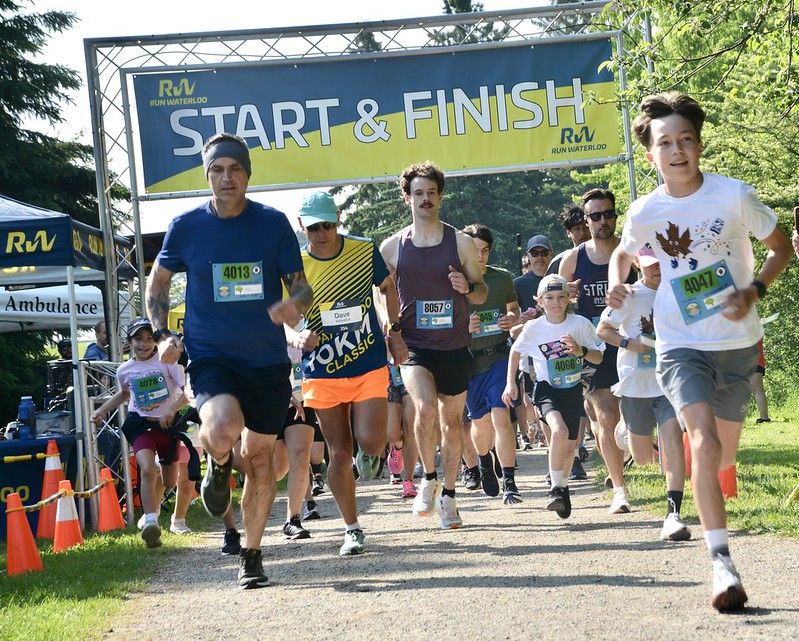The quest to give a more complete view of strength training and endurance sports continues!
In my first two articles in this series, I discussed the impact of strength training on your ability to consume oxygen (no major impact) and the impact on running economy.
In the article on strength training and running economy, I explained how 8-12 weeks of 2-3 sessions/week is required to see any change. Heavy weight, low rep exercises seem to trump plyometrics and high rep exercises. On top of this, masters and female runners are more likely to be responders. I also discussed how simply running more, if you are a low volume runner, should be the first step in trying to get faster (of course there are other benefits to strength training if you are thinking beyond speed).
Now, since there are so many multisport athletes who read this column, I thought I would address how strength training impacts cycling economy specifically. Surprisingly, the relationship isn’t quite as clear!
Intuitively, you’d think it would almost be the opposite in the minds of most- that strength training would be more helpful to cycling than to running. It kind of makes sense to speculate that cycling requires more powerful, larger muscles to smash big gears, while running requires light legs and next-level cardio. Therefore, lifting weights should help cyclists more, right? Wrong!
When we look at studies like THIS ONE, we see that cycling economy isn’t something that’s nearly as difficult to develop as running economy. As studies like this one show, runners with no cycling training tend to have pretty good cycling economy, while cyclists have horrible running economy. Cycling economy isn’t hard to train, but running economy is!
That’s also why we see that V02max is a great predictor of longer cycling event performance, while V02max does not do a great job of predicting running performance.
So when we look at the studies on strength work and cycling economy, we get mixed answers.
- It doesn’t work?
For instance, in this 2001 study, 14 competitive cyclists were provided either with a pure endurance training or a strength + endurance plan. Both groups completed close to 9 hours of training/week while the strength group conducted 37% of these hours with strength training.
Long story short, in this study, the cycling economy was not significantly different between the groups.
So that’s explosive strength work, what about heavy strength work? In another study looking at well-trained cyclists, four lower body exercises were added to their training to be conducted twice a week. They found that there was indeed an increase in the size of the thigh muscles with no change in body weight- probably a good thing! They also saw an increase in peak power and max ability to contract that muscle. However, there was no added benefit to V02max (as expected) or cycling economy! So yes, there may have been some added benefit to responding to surges in a race or perhaps the ability to sprint, but when it came to holding a 40’ TT effort, the strength work was a lot of extra work and energy exertion for no clear benefit.
- It does work?
Just to confuse you, not all studies show strength training has little impact on cycling economy. For instance, this 2016 study conducted on well-trained female cyclists has a different story to tell. In this one, after 11 weeks of strength training, there was a clear improvement in TT performance AND cycling economy.
In a 2010 study, more positive news was found for heavy strength work and cycling economy. In this one, after 8 weeks a 4.8% improvement in cycling economy was seen.
Finally, if you check out this 2011 study, you will see a clear difference between masters and younger athletes (51.5 average age vs. 25.6 average age). In this study, strength training did indeed help both groups (17.8% increase in the masters group vs. 5.9% in the younger group in maximal contraction). However, when it came to cycling economy, the masters group showed a clear improvement, while the younger athletes did not.
Practical Applications
So, does strength training actually help to improve cycling economy? In the right situation, with the right structure, the answer is maybe- and I’m not being sarcastic! Some key things to make sure you’re optimizing the odds of benefitting from strength work with your cycling economy is as follows:
- Cycling economy in general is much easier to train than running economy. If you are biking a lot and doing intervals, there may not be a lot to gain from strength work!
- If you aren’t able to squeeze in a lot of cycling volume, some heavy strength, 2-3x/week for 8-12 weeks, would be a nice way to give you a bit of an added boost.
- If you are a masters athlete, you are more likely to be a responder.
- If you are a female athlete, you are also more likely to be a responder.
- Opt for low rep, high weight options over plyometrics or high rep exercises.
As always, keep in mind that if you are taking away from your current training to add strength work, it likely is not the best way to improve your economy or performance. However, if you are adding it on top of what you are doing or strategically inserting it into your off-season, this makes a little more sense. This is also assuming all you care about is speed; strength work does a lot of good outside of this if your goals align with other targets!
It’s also important to keep in mind that you have to take into account your own personal physiology and goals. A straight TT is one thing, but if you know you are typically an athlete with poor peak power, and you’re training for a punchy road race that will require surges and sprints, strength work will undoubtedly help even if you don’t see improvement in V02max or economy.
In summary, bike more and bike harder to be a good cyclist. Add heavy strength 2-3x/week for 8-12 weeks in your off-season if you want to take a swing at getting faster from it. Consider this plan even more if you are a masters athlete, female cyclist, and/or if you have a hard time getting in your volume. On top of all of this, if you are a multisport athlete looking at your overall performance, there is no doubt that running should be the top priority (transfers well to cycling) and cycling should be the second priority (doesn’t transfer well to running), while strength work should be a strategy to maximize the two.
So what else is there when it comes to strength training and endurance performance? The impact on lactate threshold- which is up next!






